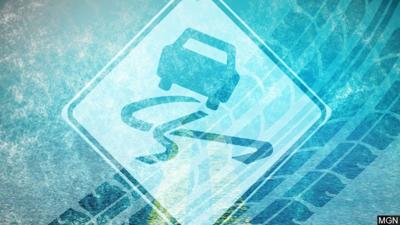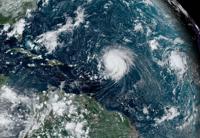(WSIL) -- Winter weather, including snow, sleet, freezing rain and bitter cold temperatures, is expected to impact travel this week.
If you have to be out driving in the winter weather, or after the roads clear out, it's important to make sure your vehicle has an emergency kit, just in case.
Preventive maintenance is also essential for safe driving and greatly decreases the chances of being stranded in the cold. However, if you do break down, you will want to have a winter emergency kit.
The kit should include:
- Traction aids (sand, salt, non-clumping cat litter or traction mats)
- Shovel
- Ice scraper
- Snow brush
- Jumper cables or jump pack
- Flashlight with extra batteries
- Basic toolkit (screwdrivers, pliers, adjustable wrench, duct tape, plastic zip ties)
- Tarp, raincoat and gloves to help stay clean/dry if you must get out of the vehicle
- Rags, paper towels or pre-moistened wipes
- Warning devices (flares, reflective triangles or LED beacons)
- First-aid kit (check expiration date)
- Drinking water
- Snacks/food for your passengers and any pets
- Winter windshield washer solvent
- Warm gloves, clothes, hats and blankets for all passengers in your car
- Car charger for mobile phone
In addition to an emergency kit, drivers should do the following to protect their vehicle from damage that can occur in winter:
- Inspect tires to ensure drivability on winter roads. Make sure tires have adequate tread depth � at least 4/32� � as worn tires can affect a driver’s ability to stop in slick conditions. An easy way to check for wear is by inserting an upside-down quarter into your tread groove. If the top of Washington's head is exposed, the tread depth is less than 4/32" and it’s time to replace your tires. Also, check that your car has a spare tire and keep it properly inflated in case you need it.
- Make sure your battery and charging system are up to par. A fully charged battery in good condition is required to start an engine in cold weather. Have your battery and charging system checked for optimum performance � particularly if your battery is more than three years old. Also, clean any corrosion from battery posts and cable connections; wipe away dirt and oil deposits on the case and make sure all hardware is secure.
- Check your windshield wipers and washers. Wiper blades should completely clear rain or snow from your windshield with each swipe. Replace blades that leave streaks or miss spots. For the winter months, purchase one-piece beam-type or rubber-clad winter blades to fight snow and ice buildup. In cold climates, be sure to fill the windshield washer reservoir with a cleaning solution that will not freeze when the temperatures drop.
- Wash and wax your vehicle to prevent rust damage. Throughout the winter, frequently wash your vehicle, paying particular attention to the undercarriage. This will loosen, dissolve and neutralize de-icing solutions. Always use a high-quality car wash solution, not a household dish detergent that will strip the wax from your vehicle.
Make sure you are checking road conditions before you leave and always wear a seatbelt.














